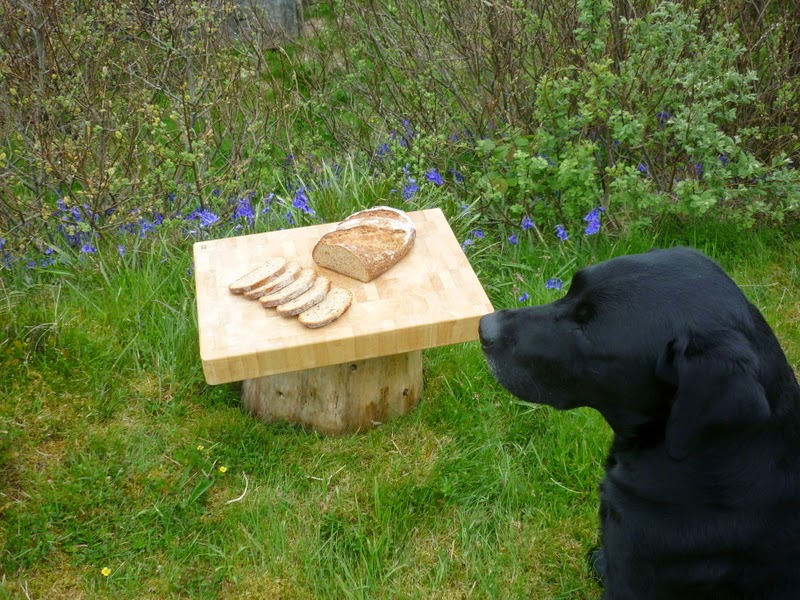
This month Carola from Sweet and That's It choose us "Back To The Future, Buddies" an Irish Soda Bread with fresh herbs, originally baked by the Bread Baking Babes in June 2011, picked by Ilva from Lucullian Delights.
I had baked soda bread before and knew it wasn't complicated and very quick! Since my friend is Irish and often mentions her mothers Soda Cake (not Bread, it's called Soda Cake!) I was keen to do it justice. Apart from the fresh herbs I added some toasted seeds and replaced some of the white flour by whole wheat flour. I made two small loaves; one for my friend and one for ourselves.
Since soda bread doesn't need any proofing time it's mixed, baked and ready to eat within 45 minutes! And as my friend says: do eat it warm, with loads of (Irish) butter!
My take on the recipe (Find Carola's recipe here. The original recipe is from "The Ballymaloe Bread Book" by Tim Allan), makes two small loaves
350 gr very strong white bread flour
100 gr very strong whole wheat bread flour
1,5 tsp. salt
1 tsp. baking soda
35 gr half freshly chopped curly parsley and half chives
45 gr toasted mixed seeds (pumpkin, sunflower, pine nut)
415 gr buttermilk
Preheat the oven to 210C (fan).
Sift flours, salt and baking soda into a mixing bowl. (Do add the bran that stays behind in your sieve!) Add the fresh herbs and seeds to the dry ingredients. Make a well in the middle and add the buttermilk. Mix the ingredients quickly with a danish dough whisk, a wooden spoon, or your hands. Don't overwork the dough! As soon as it comes together, shape the loaves into balls (approximately 5 cm high) on a well floured worktop. Place on a baking sheet and bake for 10 mins. at 210C. Lower the temperature to 180C and bake for another 15-20 mins.

















































